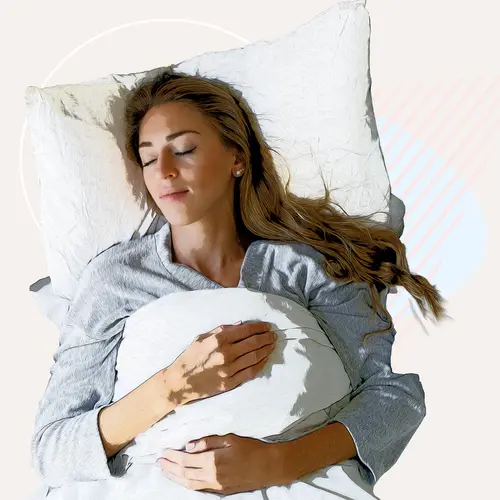If you often wake up still tired, with a headache, or with a dry mouth, you may have obstructive sleep apnea. Obstructive sleep apnea is a condition in which you stop breathing during sleep.
When you’re asleep, your chest and throat muscles relax. These are the muscles that help you breathe. If you have sleep apnea, these relaxed throat muscles, combined with a narrowed airway, can interrupt your breathing. It’s important to find out if you have sleep apnea so that it doesn’t cause serious issues.
An at-home sleep test is a simple way to figure out if sleep apnea is affecting you.
What to Expect
Home sleep tests use sensors that include a small probe. The probe goes over your finger to measure oxygen levels. You’ll wear a mask held in place around your ears. This mask also has tubes that go into your nostrils, the way an oxygen mask does. More sensors go onto your abdomen and chest to measure when your body rises and falls as you breathe.
You’ll use your home sleep test typically for only a night. Since your test will be in the comfort of your own bed, it might measure your sleep better than tests done by sleep specialists in a lab.
Home sleep tests are also more accessible than overnight sleep studies. If you don’t live near a sleep clinic, it may be challenging to coordinate a sleep study. With home sleep tests, your care team will send the tools directly to you.
They’re also a lot more affordable than overnight sleep studies. The exact cost of a home sleep test varies, but it’s usually between $150 and $500. Most insurance companies will cover the price if you have symptoms of sleep apnea.
What a Home Sleep Test Tells You
These devices track your breathing, not your sleep. Instead of measuring sleep patterns, a home sleep test will assess:
- Pauses in your breathing
- How much effort it takes for you to breathe
- How shallow your breathing is
- Your oxygen levels.
But at-home sleep tests don’t track everything that an overnight sleep study (polysomnography) does. These studies will give you a more in-depth look at any sleep issues that you have. During an overnight sleep study, a sleep technologist will look at your brain waves, muscle tone, and leg movements during sleep.
Unlike a home sleep test, which looks only for sleep apnea, an overnight sleep study checks for conditions like insomnia, restless legs syndrome, periodic limb movements disorder, narcolepsy, and sleepwalking.
These types of studies may be better if you have conditions that affect your heart, breathing, or nerves and muscles. But a home sleep test is a more cost-effective way to find out if you have sleep apnea.
When to Get a Home Sleep Test
A home sleep test may be able to help you narrow down your symptoms. You may have sleep apnea if you:
- Snore or snort when you sleep
- Gasp when you sleep
- Have disrupted sleep
- Are sleepy during the day
- Are overweight or obese
These aren’t offered as over-the-counter tests. If you decide you want to do a home sleep test, you’ll need a prescription from your doctor. You can have your primary care doctor or a doctor from a sleep clinic prescribe one.
After you take your test, your data will be uploaded onto a secure server. A sleep technologist will review the data and send it to your doctor.
If they can’t diagnose you with sleep apnea, you may have to go in for an in-lab study. Home tests may be incorrect since sensors can fall off, and no professionals are there to monitor you. An in-lab test can be a more accurate way to look for all types of sleep disorders if an at-home test doesn’t work for you.

